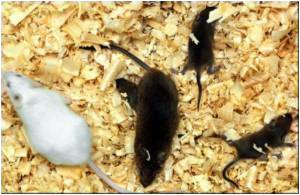
It is known that prions can be transmitted through contaminated surgical instruments and, more rarely, through blood transfusions. However, prions are not generally considered to be airborne - in contrast to many viruses such as influenza and chicken pox.
In the new study, the authors housed immunodeficient and immunocompetent mice in special inhalation chambers and exposed them to prion-containing aerosols, which induced disease. Exposure to aerosols for one minute was sufficient to induce disease in 100% of mice. The longer the exposure, the shorter the incubation time in the recipient mice, after which they developed the clinical signs of a prion disease. These findings indicate that prions are airborne. Prions appeared to transfer from the airways and colonize the brain directly, since various immune system defects – known from previous experiments to prevent the passage of prions from the gut to the brain – did not prevent infection.
The prion is the infectious agent that caused the epidemic of "mad cow" disease, also termed bovine spongiform encephalopathy (BSE). BSE claimed the life of more than 280,000 cows in the past decades. Transmission of BSE to humans, e.g. by ingestion of food derived from BSE-infected cows, causes variant Creutzfeldt-Jakob disease which is characterized by a progressive and invariably lethal breakdown of brain cells. Consumption of food made from BSE-infected cows has caused the deaths of almost 300 people.
The precautionary measures against prion infections in scientific laboratories, abattoirs, and animal feed factories have not typically included stringent protection against aerosols. These new findings suggest that it may be advisable to consider the possibility of airborne prion transmission, and to create regulations aimed at minimizing the prion infection risks to humans and animals.
Advertisement









